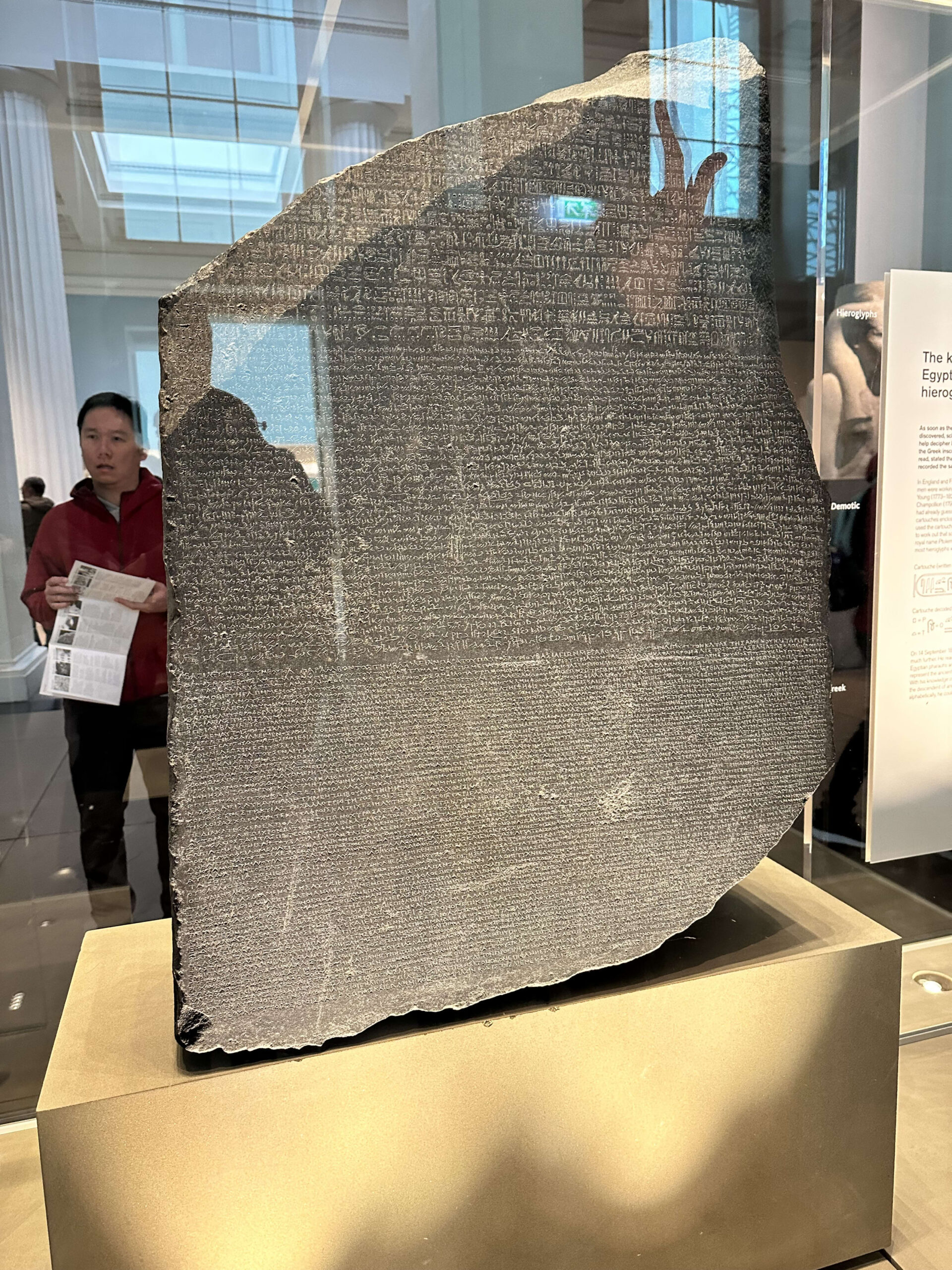A London Morning, and the Quiet Thrill Before Unlocking Human History
It’s a Sunday morning in London. The air is thick with the dampness of recent rain, carrying the distinct scent of wet cobblestones. The time is 9:37 AM. I am standing before the British Museum, a colossal sanctuary that has cradled the intellectual curiosity of the world. How long had I anticipated this visit? While my days are spent in the bustling world of digital marketing, moments like these—standing on my own two feet, feeling the very breath of history—are the essence of who I am, CityNomix, and the core of Photomo.
Although the museum had yet to open, a crowd had already formed before its magnificent facade. People from every corner of the globe stood in a line, buzzing with a quiet energy. This scene undeniably heightened the anticipation for the journey through time that was about to begin. To convey experience, not just records; to capture sensation, not the everyday. With Photomo’s ethos in mind, I took my place at the end of the line.
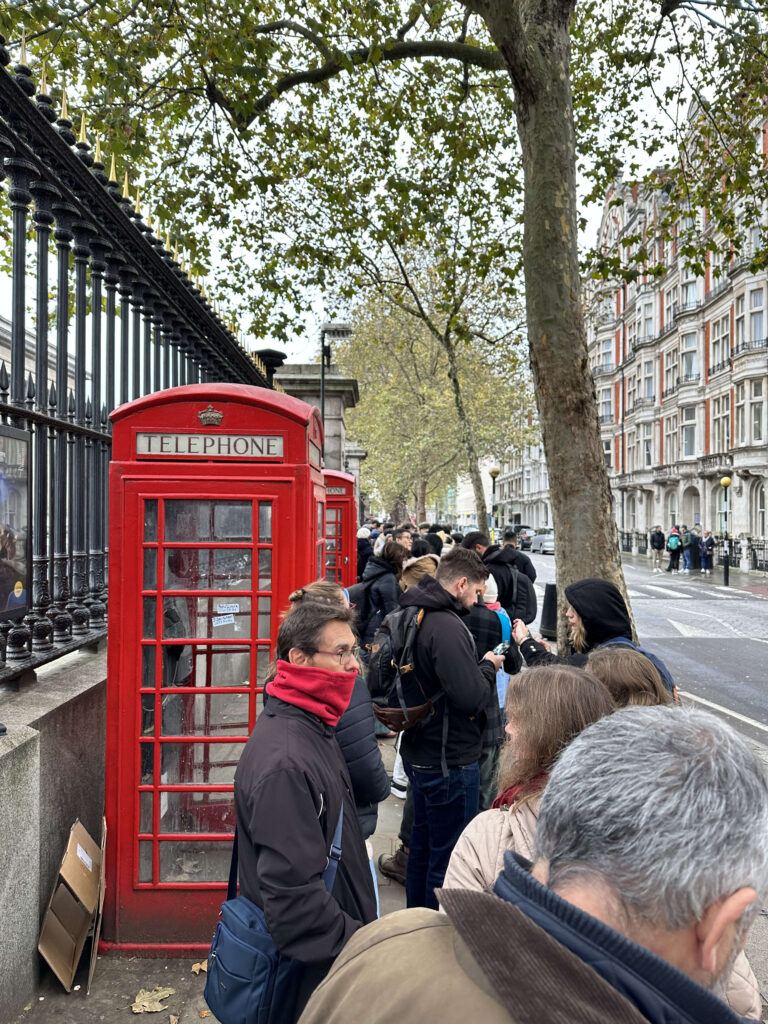
British Museum Highlights: A Journey Through Time and Space
As the long queue began to move, I passed through the grand entrance flanked by imposing Ionic columns. A brief security check followed. There’s no need to worry; it’s a smooth process of simply showing the contents of your bag to the staff. This quick procedure protects the treasures of humanity I was about to encounter.
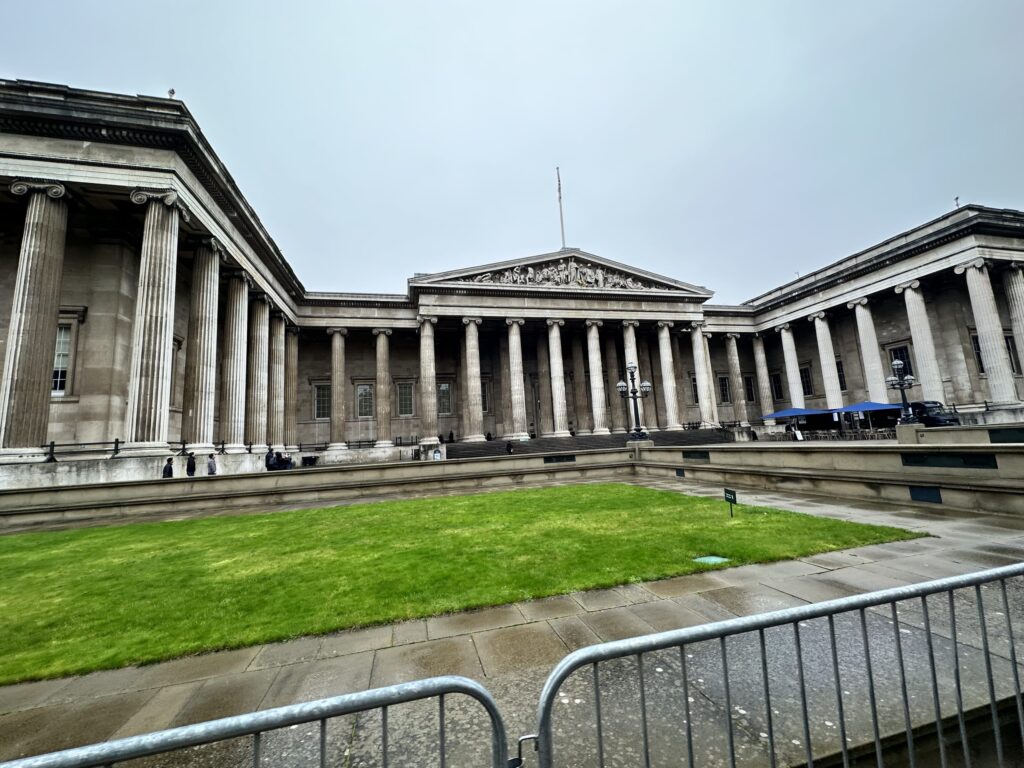
Beyond it, a breathtaking sight unfolded: the Great Court. Covered by a spectacular glass roof, this masterpiece by Lord Norman Foster floods the museum with natural light, transforming it into a bright, open space. The perfect harmony of old and new here seems to symbolize the very character of the British Museum. The circular structure at its center, once a library, now houses special exhibitions and the main gift shop. From this magnificent hub, my exploration began
Before You Go: Reservations, Access, and Opening Hours
Before diving into the collections, let’s cover some practical information. The British Museum offers free admission to its permanent collections, a wonderful philosophy that knowledge should be open to all. However, it can get extremely crowded, especially on weekends and during tourist season. Therefore, making a booking in advance on the official website is highly recommended. A reservation ensures a smooth entry at your designated time, which is essential for making the most of your visit.
Access is very convenient, just a short walk from the Tottenham Court Road or Holborn Tube stations. The museum is typically open from 10:00 AM to 5:00 PM (until 8:30 PM on Fridays), but always check the official website for the latest hours before you go. After all, you wouldn’t want to waste a single moment with so many treasures awaiting.
Famous Exhibits from Ancient Egypt You Can’t Miss
Leaving the Great Court, I first headed to the Ancient Egypt section. Here, famous exhibits I’d only seen in textbooks were displayed generously. The sense of scale is completely different from what you see in photos or videos. The entire space seems to carry the winds of the Nile from millennia ago.
The Rosetta Stone: The Key to Ancient Secrets
And then, the moment of truth arrived. I was face-to-face with the crown jewel of the British Museum: the Rosetta Stone. Inscribed in three scripts—Hieroglyphic, Demotic, and Ancient Greek—this stone slab unlocked the door to deciphering the long-mysterious Egyptian hieroglyphs. Today, it is protected by a thick glass case, but a crowd from around the world gazed intently at its inscriptions. I’d heard that over two decades ago, it was displayed without glass, allowing visitors to touch it directly. I couldn’t help but imagine the awe of those who experienced it then. The aura of this stone, a turning point in history, was overwhelming, even through the glass.
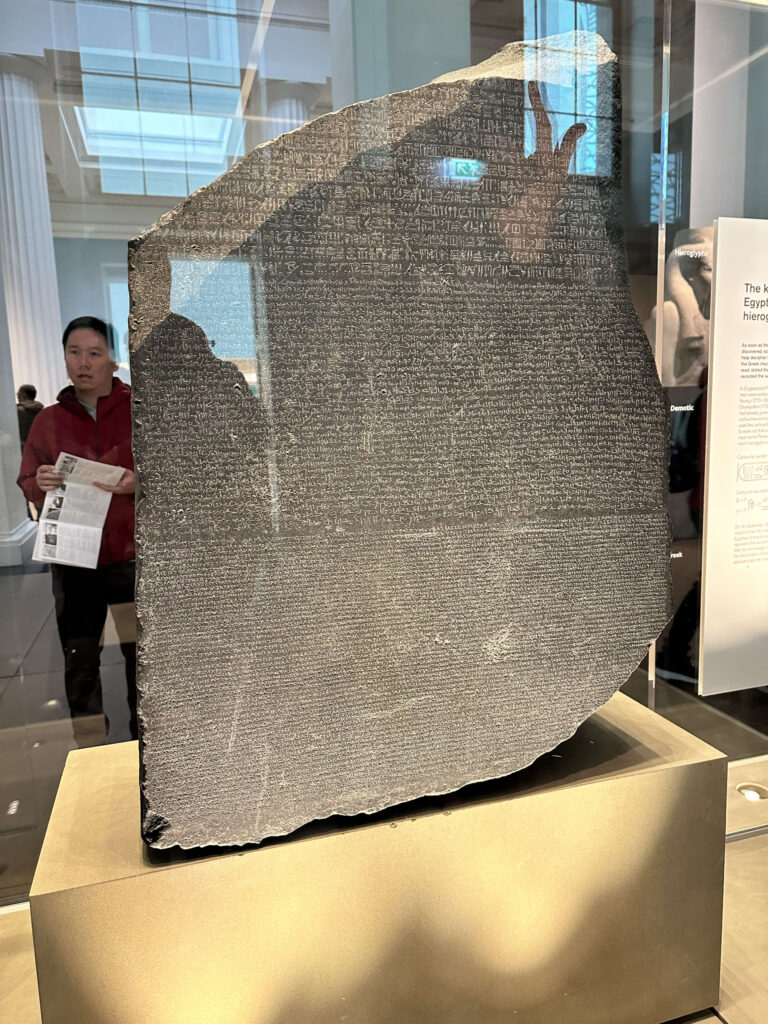
Colossal Statues of Amenhotep III: The Pharaoh’s Power
Still buzzing from the Rosetta Stone, I continued my walk and was met by a group of colossal statues. The one that left the biggest impression was the Lion of Amenhotep III, carved from red granite. Its majestic form was so imposing I was tempted to jest, “Is this the entrance to a Mitsukoshi department store?” (Of course, this is the original). Nearby, a bust of Amenhotep III himself stood. Even weathered and partially damaged, his expression conveyed the authority of an absolute ruler. How on earth were these massive stone statues transported from the banks of the Nile to London? This simple question sparked a sense of reverence for both the engineering prowess of ancient Egypt and the collecting power of the British Empire.
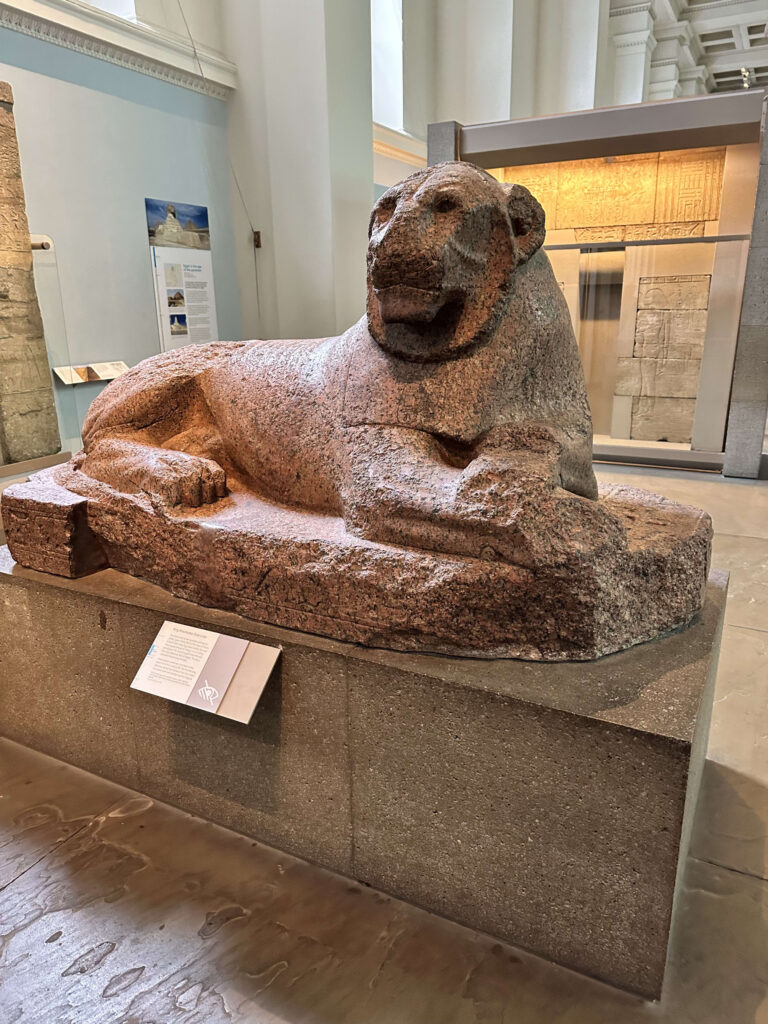
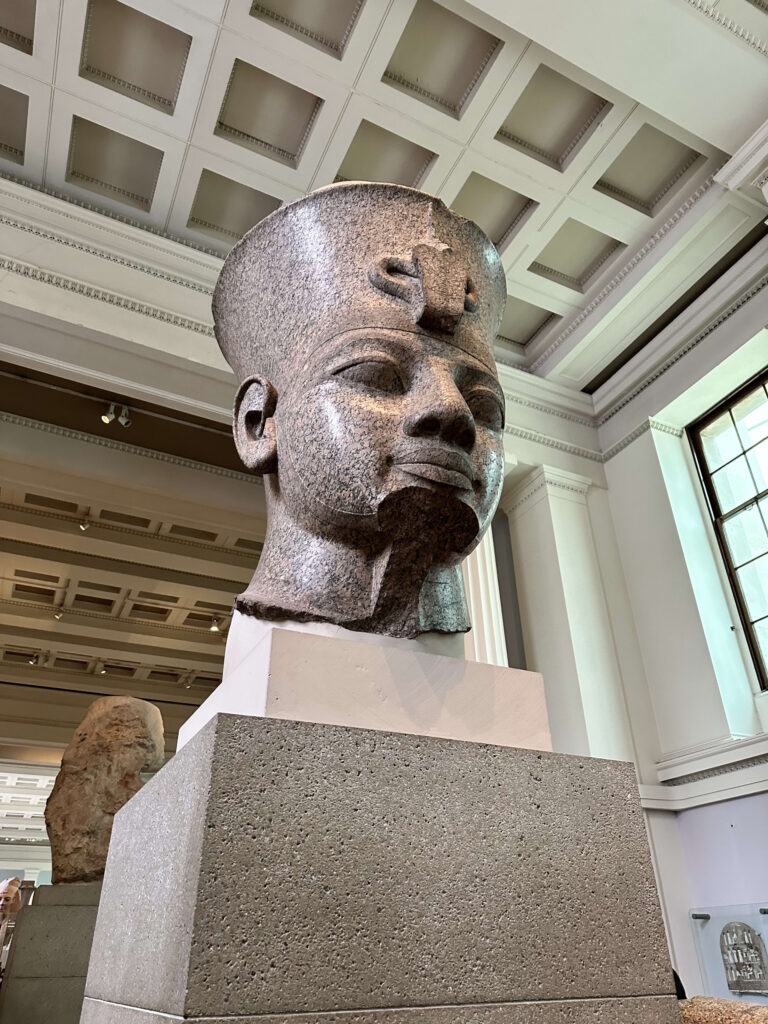
The Statue of Horemheb and Amenia: An Enduring Bond
Amidst the giant exhibits, a smaller pair of seated statues caught my eye. It was the statue of Horemheb, a pharaoh from the 18th Dynasty of Ancient Egypt, and his wife, Amenia. Carved from hard diorite, the statue depicts the couple sitting closely together, their hands firmly clasped. In contrast to the grand monuments demonstrating pharaonic power, this piece conveyed a sense of universal, intimate affection. Across millennia, this simple gesture speaks to us. This quiet moment of connection became a symbol of the profound depth of the British Museum for me.
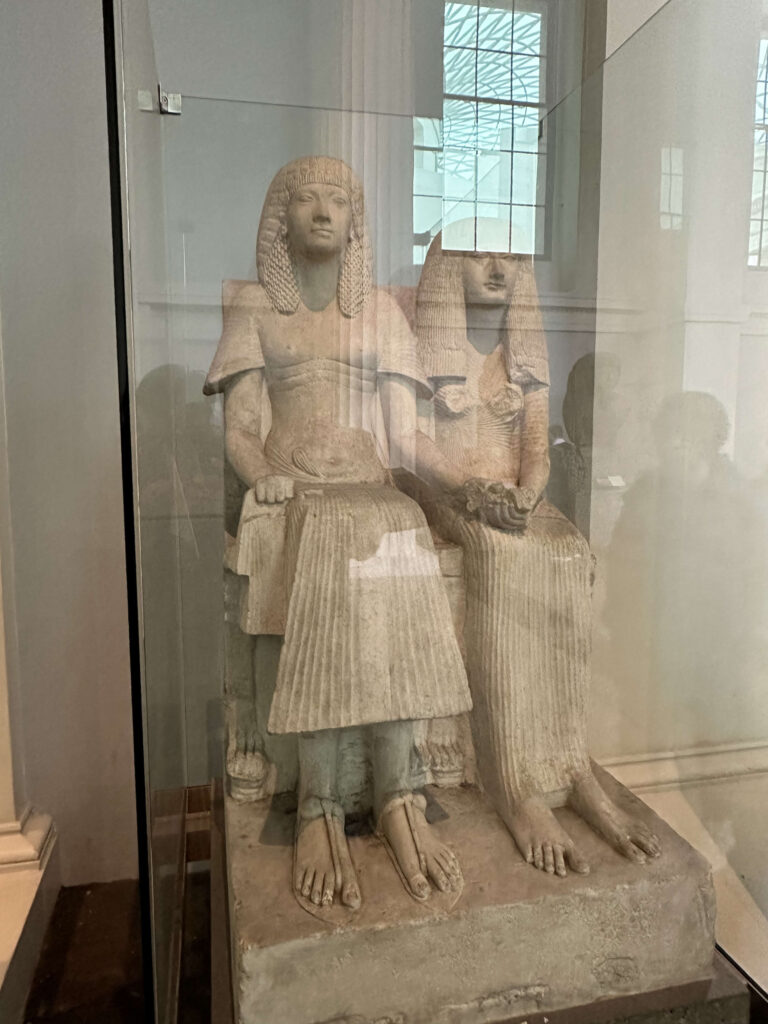
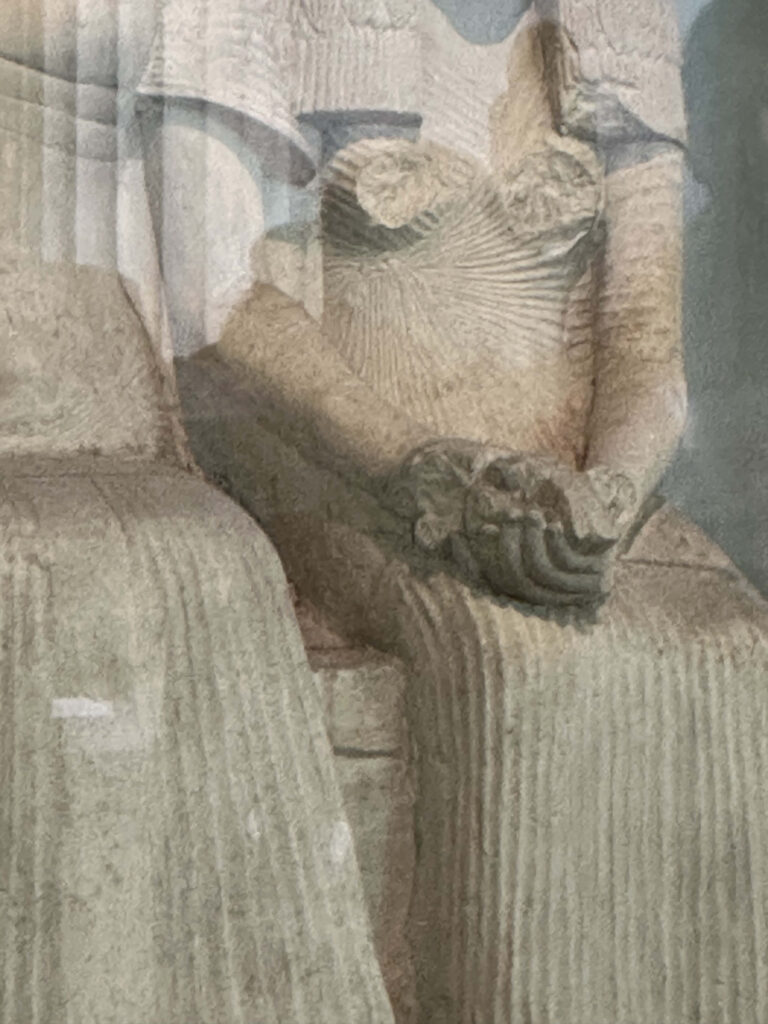
The Mummies: A Glimpse into Ancient Beliefs
When you think of the British Museum, many people imagine the mummies. The mummy section, located deep within the Ancient Egypt department, is always bustling with visitors. However, once you step inside, you’ll find a unique atmosphere of serenity and awe. Elaborately decorated coffins, linen-wrapped bodies, and the life-like reconstructions revealed by CT scans all convey the ancient Egyptians’ strong belief in the afterlife and their reverence for the dead. To be honest, standing before such a private display, I didn’t feel like taking photos. Nevertheless, this space, which prompts deep reflection on life and death, is undoubtedly worth the visit.
What About Tutankhamun’s Mask? A Common Misconception
Let me address a common question: “Can I see Tutankhamun’s golden mask at the British Museum?” The short answer is no. The famous golden mask and other major artifacts from Tutankhamun’s tomb are housed in Egypt, primarily at the Egyptian Museum in Cairo (with items gradually being moved to the new Grand Egyptian Museum). The British Museum does have some smaller items related to Tutankhamun, but not the iconic mask. It’s good to know this before you visit. While the British Museum boasts a magnificent collection, not every treasure resides here.
Japanese Art Section: A Surprising Encounter with My Homeland’s Beauty
After journeying through world civilizations, I made my way to the Japanese art section. Besides the Rosetta Stone, this was the place that left a particularly strong impression on me this time. Passing through a traditional wooden lattice door, I was greeted by a familiar yet somehow fresh atmosphere.
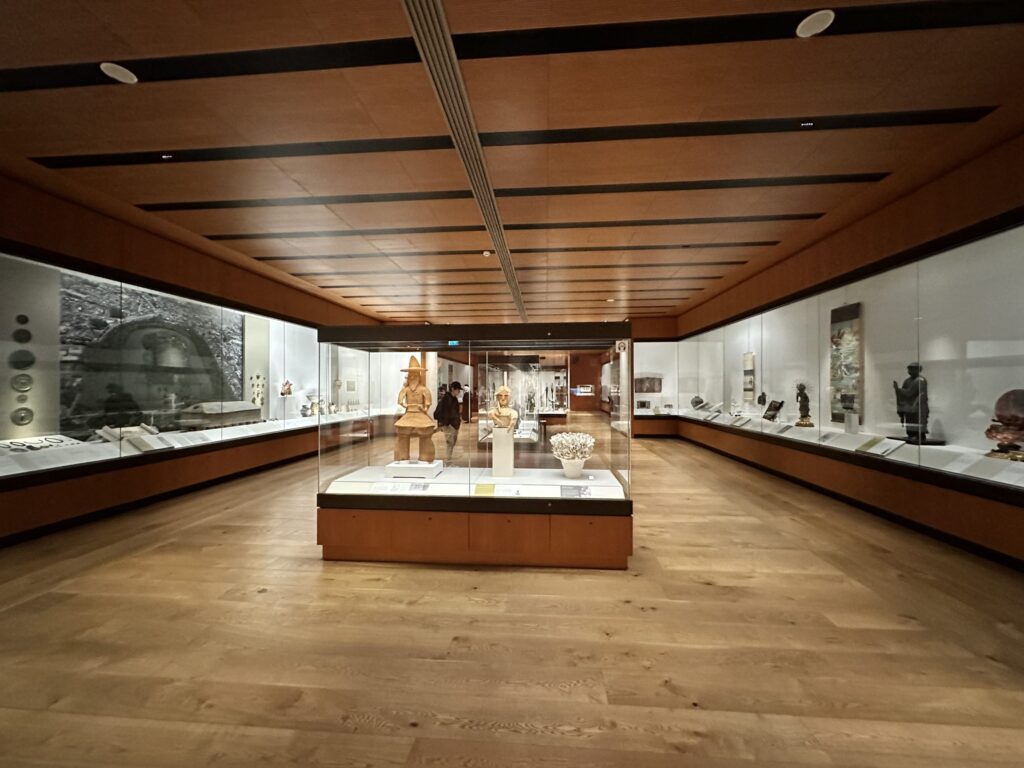
The range of exhibits was astonishing. From the dynamic beauty of Jomon pottery, thousands of years old, to intricately crafted samurai armor, ukiyo-e prints capturing the spirit of Edo, and the miniature art of netsuke. The evolution of Japanese beauty from ancient to modern times was expertly curated. I honestly didn’t expect to find such a high-quality Japanese collection in a foreign museum; it was a delightful surprise.
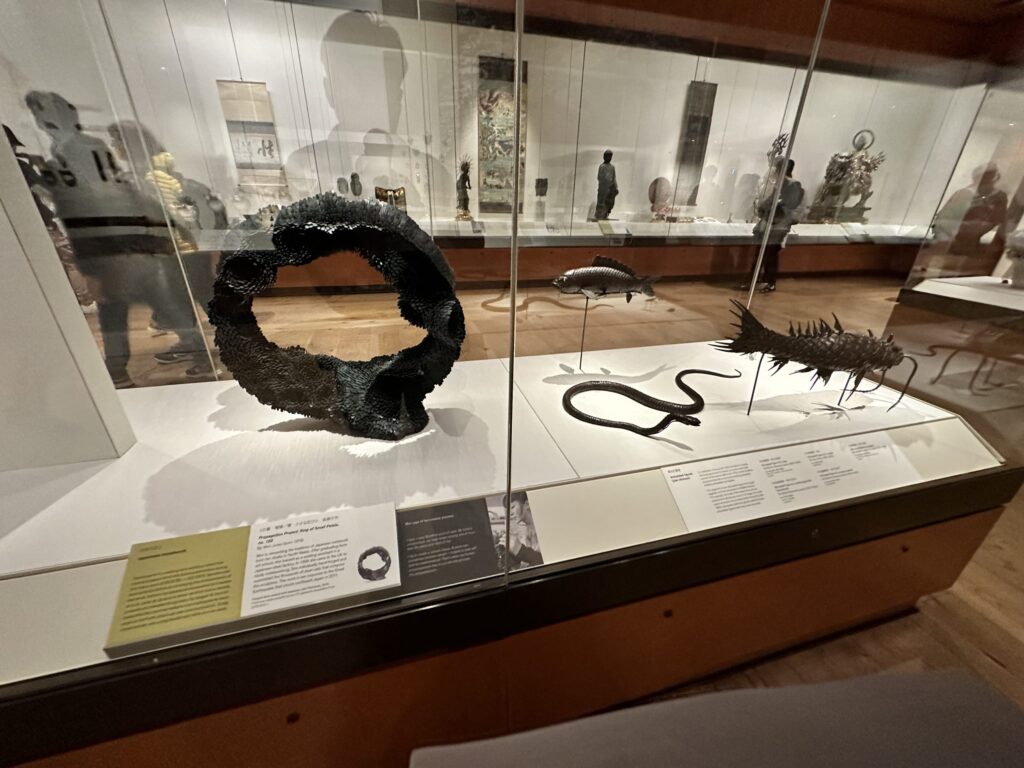
More Than Just Paintings: Propaganda That Captivated Me
Among the many highlights, one particular painting (or, more accurately, a nishiki-e woodblock print) caught my eye. It was a piece from the “War Legend” series by Tsukioka Kogyo, depicting Commander Takeo Hirose. This work, portraying a hero of the Russo-Japanese War, captures a dramatic scene of him attempting to rescue a subordinate amidst the smoke of battle. The composition and style had a power and coolness reminiscent of modern manga; I caught myself thinking, “This looks like something out of Kagurabachi.” However, it’s more than just a heroic tale. The caption revealed its role as propaganda to boost national morale. It made me reflect on how art has always been intertwined with its time and politics. A single print prompted such a deep question

The British Museum Highlights Extend to the Gift Shop
After about an hour and a half of a whirlwind tour, my intellectual curiosity was satiated. The perfect end to any journey is, of course, the museum shop. Located in the center of the Great Court, this shop is far more than a simple souvenir store. If you’re looking for British Museum souvenirs, there is no better place.
Finding the Perfect London Souvenirs in the Museum Shop
The shop’s selection is truly impressive. It’s filled with unique goods related to the exhibits, such as stationery and jewelry featuring the Rosetta Stone or mummy motifs, and scarves and tableware incorporating designs from various civilizations. Furthermore, it offers a wide range of high-quality London souvenirs, including miniatures of the iconic red double-decker bus and black taxi, commemorative tea from the royal warrant holder Twinings, and even books on the history of manga. This shop is like a final exhibition hall, where you can take a piece of the museum’s inspiration home with you.



My Purchase Review: A Piece of History for Everyday Life
From the many attractive items, I chose a Rosetta Stone tote bag and a miniature London bus. I especially love the tote bag. Its minimalist, intellectual design features a black print of the Rosetta Stone’s text on an off-white canvas. It’s not ostentatious, but it’s instantly recognizable to those in the know. That perfect balance appealed to me. Using it in my daily life allows me to reflect on the grand narrative of human history at any moment. It’s the perfect item embodying the Photomo concept. Walking the streets of London with this bag in hand makes the everyday feel just a little more special.


Final Thoughts on the British Museum’s Highlights
The British Museum is not merely a place where old things are gathered. It is a repository of accumulated human experience. You see the authority of kings in colossal statues, witness a turning point in history through a glass case, feel universal love in a pair of clasped hands, and rediscover the depth of your own culture in a foreign land. What resides here is not the dry “record” from a textbook, but a collection of living, breathing stories.
Although my visit was a brief hour and a half, just scratching the surface of the British Museum’s highlights was enough to be overwhelmed by its scale and diversity. If you are visiting London, I urge you to set aside time to visit this temple of human memory. Go and make your own discoveries from your own unique perspective. I am certain an unforgettable experience awaits, one that will stimulate your intellectual curiosity and propel you toward your next journey.
Official Site : https://www.britishmuseum.org/
Google Map :

